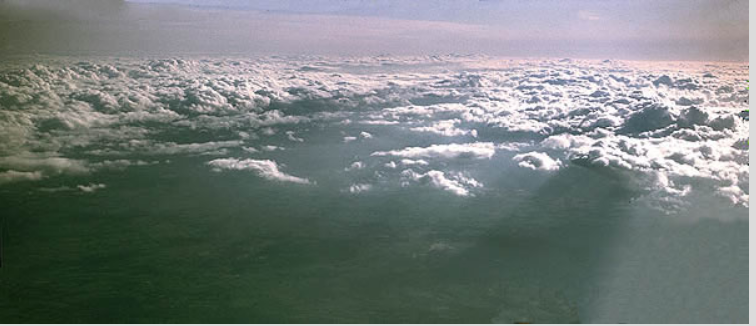Clouds fog and water Droplets
Clouds, Fog, and Water Droplets: A Closer Look
Clouds, fog, and mist are captivating atmospheric phenomena that we often encounter in our daily lives. While they may appear ethereal and elusive, these formations are composed of minuscule water droplets. In this article, we will delve into the world of clouds, fog, and water droplets, exploring their characteristics and shedding light on their intriguing properties.
The Tiny World of Water Droplets
Cloud, fog, and mist droplets are incredibly small, with an average diameter of only 10-15 microns (1 micron = 1/1000 mm). However, within a single cloud, the size of individual droplets can vary significantly, ranging from 1 to 100 microns in diameter. It is worth noting that cloud droplets are substantially smaller than raindrops, measuring 10 to 1000 times tinier.
Within a cloud, the concentration of droplets is relatively low, typically a few hundred droplets per cubic centimeter. These droplets are mostly spaced apart from each other, with those smaller than 20 microns in diameter rarely colliding or merging. It is fascinating to consider that despite their small size, these droplets collectively contribute to the awe-inspiring appearance of clouds and fog.
The Role of Water Vapor
Although clouds and fog may appear dense and solid, the reality is quite different. In fact, the majority of water is present as water vapor in the air surrounding the droplets. Clouds appear substantial and opaque due to the immense number of droplets present. As light rays pass through these droplets, they scatter multiple times over just a few meters. Consequently, most emerging rays will have been scattered several times, resulting in the characteristic appearance of clouds.
The Colorful World of Atmospheric Optics
When sunlight interacts with clouds, intriguing optical phenomena come to life. Sunlit clouds often appear white because the droplets within them scatter the different wavelengths of visible light equally. This scattering process minimizes light absorption, giving clouds their bright and uniform appearance. However, under specific lighting conditions, certain optical phenomena become visible.
Coronae, glories, and ghostly fogbows are examples of these captivating optical phenomena. They occur when the cloud or fog contains droplets of similar sizes and is thin enough for light rays to scatter only once. These unique conditions create a mesmerizing display of colors and patterns, adding an extra touch of enchantment to the atmospheric scenery.
The Spherical Nature of Droplets
Surface tension forces play a crucial role in shaping water droplets. These forces keep the droplets fiercely spherical, contributing to their symmetrical appearance. Despite their seemingly delicate structure, these droplets fall incredibly slowly. Air currents within the atmosphere effectively keep them aloft for extended periods, defying gravity and allowing them to linger in the sky.
Exploring Further
Clouds, fog, and water droplets continue to captivate scientists and enthusiasts alike. By studying their properties and behaviors, we gain a deeper understanding of the intricate workings of our atmosphere. From the physics of droplet formation to the interplay of light and water, the world of atmospheric optics offers endless avenues for exploration and discovery.
Conclusion
Clouds, fog, and water droplets provide us with a glimpse into the fascinating world of atmospheric optics. These seemingly ephemeral formations are composed of tiny droplets that scatter light, creating breathtaking displays of color and pattern. Understanding the characteristics and properties of clouds and fog allows us to appreciate their beauty even more. So, the next time you find yourself gazing at the sky, take a moment to marvel at the intricate dance of water droplets that shape our atmospheric landscapes.

Spring Cloudscape NW England photo ©Lea Cowley
Cloud, fog and mist droplets are very small. Their mean diameter is typically only 10-15 micron (1 micron = 1/1000 mm) but in any one cloud the individual drops range greatly in size from 1 to 100 micron dia. Cloud droplets are 10 to 1000X smaller than raindrops.
A cloud typically contains a few hundred droplets per cc. They are mostly far apart from each other and those smaller than 20 micron diameter rarely collide and coalesce.
In all but thunder clouds, the droplets make up less than a millionth of the volume. Most water is actually present as water vapour in the air surrounding the droplets.
Clouds appear substantial and opaque because the total number of droplets is immense. Light rays are scattered after travelling just a few metres and most emerging rays will have been scattered several times. Sunlit clouds appear white because, overall, their droplets scatter the different wavelengths of visible light equally and absorb little light in the process. Colourful coronae, glories and ghostly fogbows show up when the cloud or fog has similar sized droplets and when the cloud is thin and lighting conditions are such that light rays are only scattered once.

Cloud droplets and two raindrops. The tiny cloud droplets are shown here close together but in reality they are on average ~1 mm apart, some 100X their diameter.
Surface tension forces keep the droplets fiercely spherical.
They fall so slowly that air currents keep them aloft almost indefinitely.
Note: this article has been automatically converted from the old site and may not appear as intended. You can find the original article here.
Reference Atmospheric Optics
If you use any of the definitions, information, or data presented on Atmospheric Optics, please copy the link or reference below to properly credit us as the reference source. Thank you!
-
<a href="https://atoptics.co.uk/blog/clouds-fog-and-water-droplets/">Clouds fog and water Droplets</a>
-
"Clouds fog and water Droplets". Atmospheric Optics. Accessed on April 19, 2024. https://atoptics.co.uk/blog/clouds-fog-and-water-droplets/.
-
"Clouds fog and water Droplets". Atmospheric Optics, https://atoptics.co.uk/blog/clouds-fog-and-water-droplets/. Accessed 19 April, 2024
-
Clouds fog and water Droplets. Atmospheric Optics. Retrieved from https://atoptics.co.uk/blog/clouds-fog-and-water-droplets/.